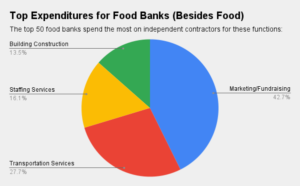The Supplemental Nutrition Assistance Program is the big daddy of all the food-related federal aid programs. At $68 billion in 2017, SNAP was five times as large as the next biggest program, National School Lunch. At least 42 million people (about 13% of the nation’s population) participated in SNAP in every month of 2017, receiving an average benefit of about $126 a month. That works out to about $1.40 per person per meal, according to the Center on Budget and Policy Priorities, an amount that tends to go quickly. By the end of the second week, the average SNAP household has redeemed more than three-quarters of its monthly benefits, says the CBPP.
In its earliest iteration, SNAP was not focused solely on hunger relief. The program originated as a way to support farmers who were unable to sell their crops to a poverty-stricken populace during the Great Depression, with the government purchasing excess supply at discount prices and distributing it to hunger relief agencies. Though this original program was discontinued in 1943 as the post-war economy improved, SNAP to this day remains subject to the terms of the farm bill.
The current program, which was revived in the 1960s due to rising hunger and re-christened SNAP in 2008, is designed to expand or contract in accordance with need. As the economy improves, in other words, recipients generate more income and SNAP participation ebbs, a trend played out over the course of the Great Recession. Though the recession officially ended in 2009, its impact lingered, with record poverty rates persisting into 2013. Accordingly, SNAP outlays peaked in 2013 at nearly $80 billion, according to the USDA, and have steadily declined since then as the recovery has spread.
Another factor causing SNAP caseloads to decline is the return in many states of a provision that limits unemployed, childless adults to three months of SNAP benefits over three years. That limit had been lifted during the recession, but is now back on in many states. CBPP estimated that at least half a million and as many as one million people lost their SNAP benefits in 2016 as several states re-imposed the three-month time limit.





